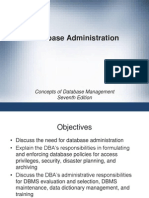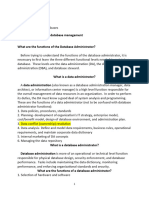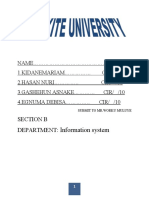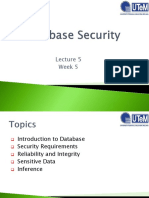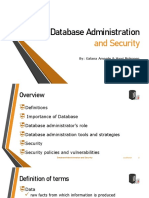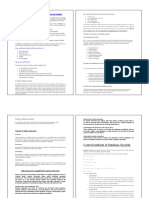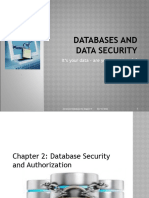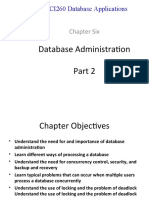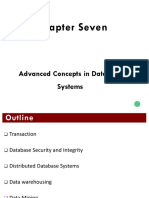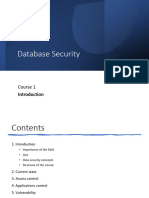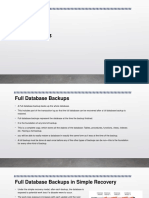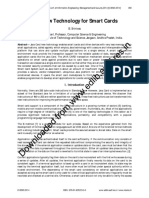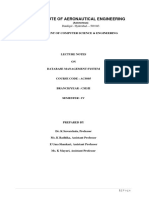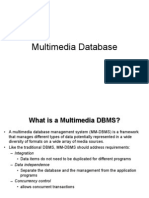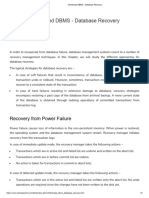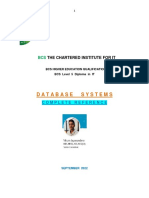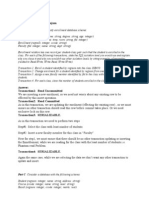0% found this document useful (0 votes)
60 views48 pagesCHP 12
This chapter discusses data and database administration. It defines data administration as responsible for overall management of organizational data resources, and database administration as dealing with technical issues like security, performance, and backup/recovery. The chapter lists functions of both roles and describes evolving approaches like data warehouse administration. It also covers topics like data modeling, security threats and techniques, open source DBMSs, and database recovery methods including backup, journaling and checkpointing.
Uploaded by
Aqsa NoumanCopyright
© © All Rights Reserved
We take content rights seriously. If you suspect this is your content, claim it here.
Available Formats
Download as PPT, PDF, TXT or read online on Scribd
0% found this document useful (0 votes)
60 views48 pagesCHP 12
This chapter discusses data and database administration. It defines data administration as responsible for overall management of organizational data resources, and database administration as dealing with technical issues like security, performance, and backup/recovery. The chapter lists functions of both roles and describes evolving approaches like data warehouse administration. It also covers topics like data modeling, security threats and techniques, open source DBMSs, and database recovery methods including backup, journaling and checkpointing.
Uploaded by
Aqsa NoumanCopyright
© © All Rights Reserved
We take content rights seriously. If you suspect this is your content, claim it here.
Available Formats
Download as PPT, PDF, TXT or read online on Scribd
/ 48








